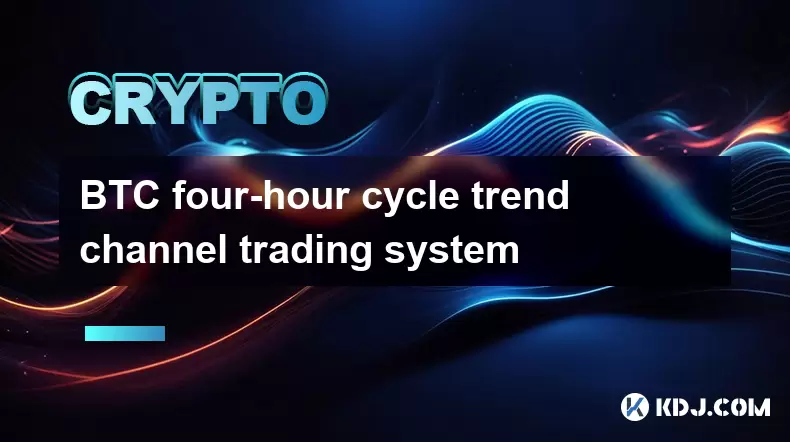-
 Bitcoin
Bitcoin $116700
0.24% -
 Ethereum
Ethereum $3973
4.34% -
 XRP
XRP $3.283
7.68% -
 Tether USDt
Tether USDt $1.000
0.01% -
 BNB
BNB $789.8
2.27% -
 Solana
Solana $176.2
3.31% -
 USDC
USDC $0.9999
0.00% -
 Dogecoin
Dogecoin $0.2238
5.14% -
 TRON
TRON $0.3389
-0.51% -
 Cardano
Cardano $0.7907
4.03% -
 Stellar
Stellar $0.4527
10.02% -
 Hyperliquid
Hyperliquid $41.07
4.27% -
 Sui
Sui $3.794
1.77% -
 Chainlink
Chainlink $19.49
10.40% -
 Bitcoin Cash
Bitcoin Cash $580.9
0.74% -
 Hedera
Hedera $0.2617
4.32% -
 Avalanche
Avalanche $23.41
3.67% -
 Ethena USDe
Ethena USDe $1.001
-0.03% -
 Litecoin
Litecoin $122.4
1.38% -
 Toncoin
Toncoin $3.364
1.49% -
 UNUS SED LEO
UNUS SED LEO $8.988
0.37% -
 Shiba Inu
Shiba Inu $0.00001295
2.82% -
 Uniswap
Uniswap $10.62
5.75% -
 Polkadot
Polkadot $3.922
4.46% -
 Dai
Dai $1.000
0.01% -
 Bitget Token
Bitget Token $4.494
2.15% -
 Monero
Monero $268.0
-1.30% -
 Cronos
Cronos $0.1523
3.68% -
 Pepe
Pepe $0.00001127
4.43% -
 Aave
Aave $285.4
4.85%
BTC four-hour cycle trend channel trading system
The BTC four-hour cycle trend channel trading system helps traders capitalize on Bitcoin's price movements using a stable four-hour time frame to identify trends and manage risk effectively.
May 31, 2025 at 02:21 pm

Introduction to BTC Four-Hour Cycle Trend Channel Trading System
The BTC four-hour cycle trend channel trading system is a popular method among cryptocurrency traders to capitalize on Bitcoin's price movements. This system utilizes a four-hour time frame to identify trends and establish trading channels that help traders make informed decisions. By understanding and applying this system, traders can potentially improve their trading outcomes and manage risk more effectively. In this article, we will explore the components of this trading system, how to set it up, and how to execute trades based on the signals it generates.
Understanding the Four-Hour Cycle
The four-hour cycle is a key element of this trading system. It refers to the time frame used to analyze Bitcoin's price movements. Unlike shorter time frames that can be noisy and lead to false signals, the four-hour cycle provides a more stable view of market trends. This time frame allows traders to filter out short-term fluctuations and focus on more significant price movements.
To understand the four-hour cycle, it is essential to grasp the concept of candlestick charts. Each candlestick on a four-hour chart represents the price action over a four-hour period. By analyzing a series of these candlesticks, traders can identify patterns and trends that may not be visible on shorter or longer time frames.
Setting Up the Trend Channel
A trend channel is a visual representation of the price range within which Bitcoin tends to move over time. To set up a trend channel on a four-hour chart, follow these steps:
- Open your trading platform and navigate to the Bitcoin chart.
- Select the four-hour time frame to ensure you are viewing the correct cycle.
- Identify the recent high and low points on the chart. These points should be significant and clearly visible.
- Draw a trend line connecting the high points to create the upper boundary of the channel.
- Draw another trend line connecting the low points to create the lower boundary of the channel.
The space between these two trend lines forms the trend channel. This channel helps traders visualize the range within which Bitcoin is likely to move, providing clear entry and exit points for trades.
Identifying Entry and Exit Points
Once the trend channel is established, traders can use it to identify entry and exit points for their trades. Here's how to do it:
- Entry Point: When the price approaches the lower boundary of the trend channel, it may be a good time to enter a long position. This is based on the expectation that the price will rebound and move towards the upper boundary.
- Exit Point: When the price reaches the upper boundary of the trend channel, it may be a good time to exit the long position and take profits. Conversely, if the price breaks out of the upper boundary, it could signal a strong upward trend, and traders might consider holding their positions.
For short positions, the process is reversed:
- Entry Point: When the price approaches the upper boundary of the trend channel, it may be a good time to enter a short position. This is based on the expectation that the price will retreat towards the lower boundary.
- Exit Point: When the price reaches the lower boundary of the trend channel, it may be a good time to exit the short position and take profits. If the price breaks out of the lower boundary, it could signal a strong downward trend, and traders might consider holding their positions.
Managing Risk with Stop-Loss Orders
Risk management is a critical component of any trading system, and the BTC four-hour cycle trend channel trading system is no exception. One effective way to manage risk is by using stop-loss orders. Here's how to set them up:
- Determine your risk tolerance and decide on the maximum amount you are willing to lose on a single trade.
- Calculate the stop-loss level based on your risk tolerance and the current price of Bitcoin. For long positions, place the stop-loss order just below the lower boundary of the trend channel. For short positions, place the stop-loss order just above the upper boundary of the trend channel.
- Enter the stop-loss order into your trading platform. This will automatically close your position if the price reaches the specified level, limiting your potential losses.
By using stop-loss orders, traders can protect their capital and ensure they do not suffer significant losses from unexpected price movements.
Executing Trades Based on the System
To execute trades using the BTC four-hour cycle trend channel trading system, follow these steps:
- Monitor the four-hour chart regularly to stay updated on Bitcoin's price movements.
- Identify the trend channel and its boundaries as described earlier.
- Wait for the price to approach the lower boundary of the trend channel. When it does, consider entering a long position.
- Place a stop-loss order just below the lower boundary to manage risk.
- Monitor the price as it moves towards the upper boundary of the trend channel.
- Exit the long position when the price reaches the upper boundary and take profits.
- Repeat the process for short positions by waiting for the price to approach the upper boundary and entering a short position with a stop-loss order just above the upper boundary.
By following these steps, traders can systematically execute trades based on the signals generated by the BTC four-hour cycle trend channel trading system.
Frequently Asked Questions
Q: Can the BTC four-hour cycle trend channel trading system be used for other cryptocurrencies?
A: Yes, the BTC four-hour cycle trend channel trading system can be adapted for other cryptocurrencies. However, traders should be aware that different cryptocurrencies may exhibit different price behaviors, and adjustments to the system may be necessary.
Q: How often should I monitor the four-hour chart when using this trading system?
A: It is recommended to monitor the four-hour chart at least twice a day to stay updated on Bitcoin's price movements and identify potential trading opportunities.
Q: Is the BTC four-hour cycle trend channel trading system suitable for beginners?
A: While the system is relatively straightforward, beginners should ensure they fully understand the concepts of trend channels, candlestick charts, and risk management before using it. It may be beneficial for beginners to practice with a demo account before trading with real money.
Q: Can I combine the BTC four-hour cycle trend channel trading system with other trading strategies?
A: Yes, traders can combine this system with other strategies to enhance their trading approach. For example, incorporating technical indicators like moving averages or the Relative Strength Index (RSI) can provide additional confirmation of trading signals.
Disclaimer:info@kdj.com
The information provided is not trading advice. kdj.com does not assume any responsibility for any investments made based on the information provided in this article. Cryptocurrencies are highly volatile and it is highly recommended that you invest with caution after thorough research!
If you believe that the content used on this website infringes your copyright, please contact us immediately (info@kdj.com) and we will delete it promptly.
- Punisher Coin: The Altcoin Ready to Punish Your Portfolio with Gains?
- 2025-08-08 22:50:16
- Mutuum Finance, Bitcoin Whales, and Binance: Decoding the Crypto Currents
- 2025-08-08 22:30:11
- Bitcoin, Crypto Market, Volatility: Riding the Rollercoaster in NYC Style
- 2025-08-08 22:50:16
- HTX Copy Trading Extravaganza: Rewards and Opportunities for Traders
- 2025-08-08 23:30:12
- SPX6900 Pumps & TOKEN6900 Presale: Month Growth Mania!
- 2025-08-08 23:30:12
- Dogwifhat, Beanie, and $800,000: A Meme Worth Millions?
- 2025-08-08 23:35:12
Related knowledge

Can the Bitcoin protocol be changed?
Aug 07,2025 at 01:16pm
Understanding the Bitcoin ProtocolThe Bitcoin protocol is the foundational set of rules that govern how the Bitcoin network operates. It defines every...

How are Bitcoin transactions verified?
Aug 08,2025 at 06:57am
Understanding Bitcoin Transaction VerificationBitcoin transactions are verified through a decentralized network of nodes and miners that ensure the le...

How does decentralization make Bitcoin secure?
Aug 08,2025 at 09:35am
Understanding Decentralization in BitcoinDecentralization is a foundational principle of Bitcoin's architecture and plays a critical role in its secur...

What are some common misconceptions about Bitcoin?
Aug 07,2025 at 07:22pm
Bitcoin is Just Like Regular MoneyA widespread misconception is that Bitcoin functions identically to traditional fiat currencies like the US dollar o...

What is the role of nodes in the Bitcoin network?
Aug 08,2025 at 04:14pm
Understanding the Function of Nodes in the Bitcoin NetworkNodes are fundamental components of the Bitcoin network, serving as the backbone that ensure...

Is Bitcoin a solution for inflation?
Aug 08,2025 at 04:57am
Understanding Inflation and Its Impact on Traditional CurrenciesInflation refers to the sustained increase in the price of goods and services over tim...

Can the Bitcoin protocol be changed?
Aug 07,2025 at 01:16pm
Understanding the Bitcoin ProtocolThe Bitcoin protocol is the foundational set of rules that govern how the Bitcoin network operates. It defines every...

How are Bitcoin transactions verified?
Aug 08,2025 at 06:57am
Understanding Bitcoin Transaction VerificationBitcoin transactions are verified through a decentralized network of nodes and miners that ensure the le...

How does decentralization make Bitcoin secure?
Aug 08,2025 at 09:35am
Understanding Decentralization in BitcoinDecentralization is a foundational principle of Bitcoin's architecture and plays a critical role in its secur...

What are some common misconceptions about Bitcoin?
Aug 07,2025 at 07:22pm
Bitcoin is Just Like Regular MoneyA widespread misconception is that Bitcoin functions identically to traditional fiat currencies like the US dollar o...

What is the role of nodes in the Bitcoin network?
Aug 08,2025 at 04:14pm
Understanding the Function of Nodes in the Bitcoin NetworkNodes are fundamental components of the Bitcoin network, serving as the backbone that ensure...

Is Bitcoin a solution for inflation?
Aug 08,2025 at 04:57am
Understanding Inflation and Its Impact on Traditional CurrenciesInflation refers to the sustained increase in the price of goods and services over tim...
See all articles

























































































